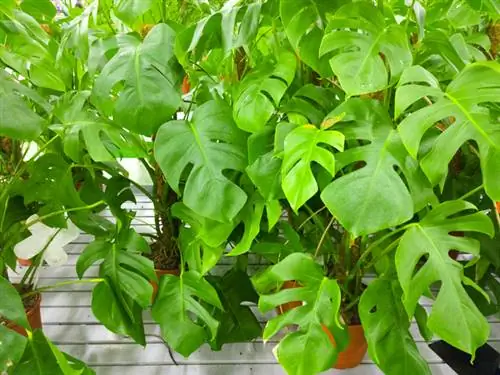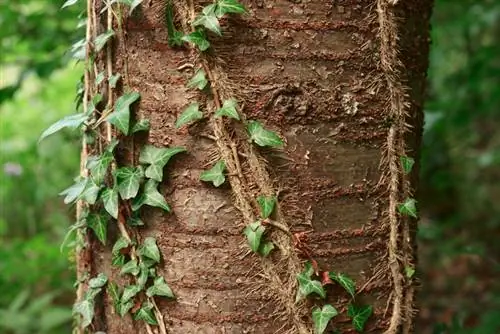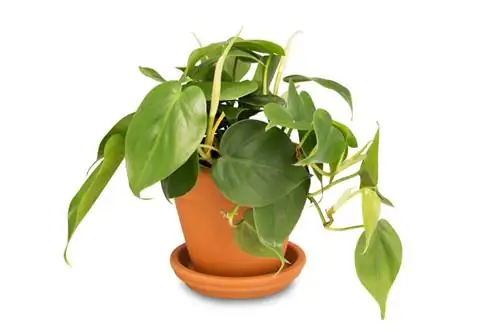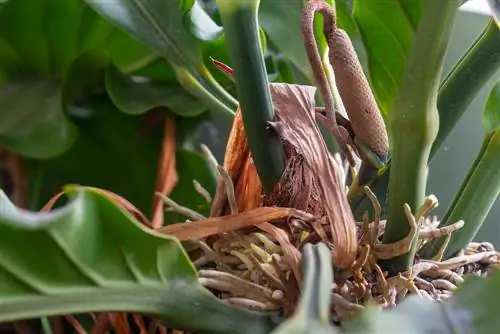- Author admin [email protected].
- Public 2023-12-16 16:46.
- Last modified 2025-06-01 06:02.
As they grow, Monstera develop aerial roots that become noticeably longer. If the root strands are perceived as disturbing, the question of cutting them back arises. You can find out how to properly deal with aerial roots on your window leaf here.
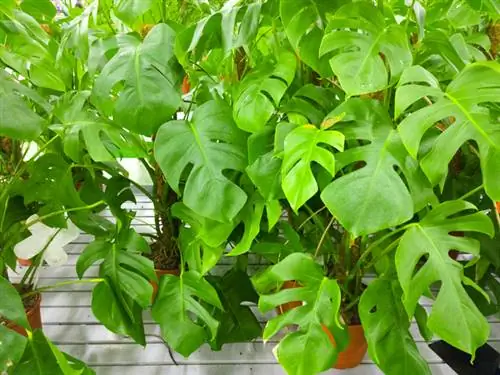
Can you cut off Monstera aerial roots?
Should Monstera aerial roots be cut off? In most cases, cutting them is not recommended as they play an important role in nourishing the plant. Shortening is only permitted if cultivation is disturbed or roots are dried or disturbing. Species-appropriate care helps to prevent unnaturally long aerial roots.
Why do aerial roots grow on the window leaf?
Monstera species thrive in the tropics as evergreen climbing plants. As the roots grow larger, they no longer meet the need for water and nutrients. For this reason, after a while additional aerial roots sprout between the leaf axils. These serve as both a supply line and an adhesive organ, so they play a key role in growth.
Cutting only permitted in exceptional cases
In view of their function as lifelines, the aerial roots should not be removed. As long as a root strand is turgid and thriving, you are weakening the constitution of a Monstera if you use the scissors here. An exception to the rule is when an aerial root tries to anchor itself in the ground behind the skirting boards or attacks neighboring houseplants. Furthermore, cutting is permitted if a root has completely dried up and died.
Please use a sharp knife that has been disinfected with alcohol (€9.00 on Amazon) for the cut. Cut off the affected aerial root directly at the shoot axis. Ideally, dab the cut with some rock dust or charcoal ash to regulate the flow of sap.
Prevention is better than performance - this is how it works
Extremely long aerial roots signal that the cultivation of a Monstera is not proceeding in a regulated manner. If your window leaf lacks water, nutrients or a climbing aid, it will send its roots out desperately looking for it. How to effectively prevent this behavior:
- Wate the substrate regularly with soft water
- Spray the leaves and aerial roots with water every 2 to 3 days
- Fertilize every 2 weeks in summer, every 4 to 6 weeks in winter
- Offer a climbing aid to the window leaf in proportion to its growth
If a window leaf is cared for appropriately, it sees no reason for the growth of unnaturally long aerial roots.
Tip
Do not grab scissors on the window leaf without first putting on gloves. As aroid plants, all Monstera species contain a poisonous plant sap. Sensitive people have to pay for unpleasant irritation just from skin contact.

